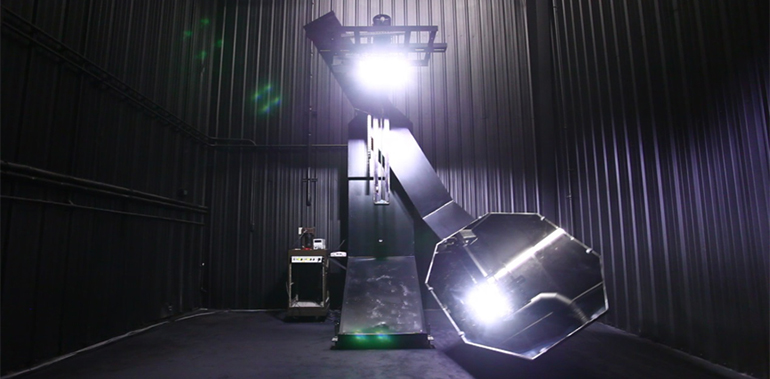Developing a brighter and efficient tomorrow, with the revolutionary goniophotometer and integrating sphere.

19 Jul 2016
Intertek introduces a breakthrough technology for testing the performance of luminaries and other energy efficient lighting systems.
Over the last decade, there has been a steep increase in the demand of energy-efficient lighting products in India. This has led to the development of a number of voluntary and compulsory energy efficiency programs, performance initiatives and labeling standards. Compliance with any or all of these voluntary programs can be a significant source of differentiation, revenue, leadership and promotion. These labeling and energy efficiency programs have become a compelling reason for manufacturers to invest time and resources into the pursuit and achievement of these voluntary standards. To facilitate the same, Intertek have added the revolutionary Type-C High Speed Moving Mirror Goniophotometer and 3-meter Integrating Sphere testing system to its Luminaire Performance Testing laboratory in New Delhi, India.
What is a Goniophotometer?
A Goniphotometer is an advanced device used to measure the directional light distribution characteristics of luminaires. This device measures data in a series of spherical photometric coordinates surrounding the light source. Goniophotometer types are divided into three categories Type A, B and C. Intertek India has a Type C goniphotometer which has a Type C coordinate system. The elimination of tilting of the luminaire in Type-C goniophotometer makes it ideal for measuring the light output of position-sensitive Lamps. This type of goniophotometer creates the Type C web of data, the luminaire is normally aimed at nadir.
Capabilities of a Type C Goniophotometer
A goniophotometer is effective in measuring the following parameters and provide below graphical output/data:
- Luminous flux
- Lamp efficacy
- For any horizontal/vertical angle the system provides Color rendering index (CRI), Correlated color temperature (CCT), Chromaticity coordinates (x,y or u',v')
- Polar intensity (candlepower)
- Axially symmetric, bisymmetric and quadrilaterally symmetric distributions.
- Roadway plane and cone intensities.
- CIE C-0 and C-90 graphs
- Isofootcandle/Isolux
- IESNA and CIE roadway classification
- Onion isocandela
- Floodlight intensity (rectilinear)
- Floodlight isocandela (Type B/Beta)
What is an Integrating Sphere?
An Integrating sphere is a device that spatially integrates the radiant flux generated from a sample so that it can be detected with a single detector. The function of an integrating sphere is to spatially integrate radiant flux. The integrating sphere is equipment with a spectrometer (CCD detector), a baffle, an auxiliary lamp assembly, reflective coating, lamp mounting hardware, lampholder and associated electrical wiring.

Capabilities of 3-Meter Integrating Sphere.
Integrating Sphere is effective in measuring the following parameters:
- Total Spectral Flux (Watts/nm)
- Total Radiant Flux (Watts)
- Total Luminous Flux (lumens)
- Dominant Wavelength
- Peak Wavelength
- Spectral Purity
- Correlated Color Temperature
- Color Rendering Index (CRI)
- Chromaticity Coordinates (x,y or u',v')
Get the Intertek Edge
As a global leader in testing, inspection and certification services, Intertek can help customer test their products as per Illuminating Engineering Society of North America (IESNA) Standards, Indian Standards (IS) and as per the upcoming BEE regulation for LED Bulbs that will be mandatory from 2017.
